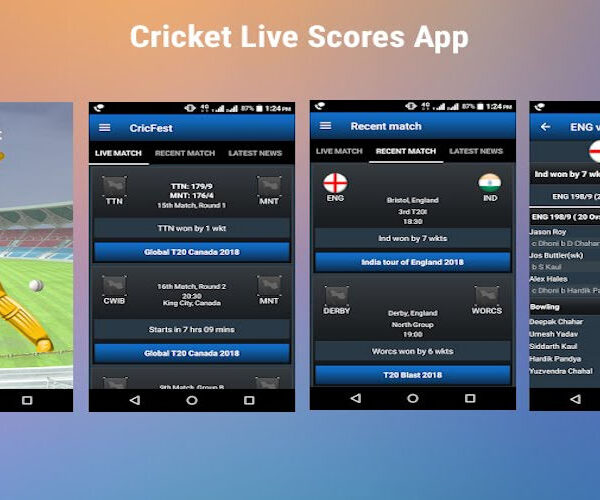Cricket is not just a sport; it is a global passion. From T20 leagues and One Day Internationals (ODIs) to the Indian Premier League (IPL) and the World Cup, millions of fans follow matches with excitement. Predicting match outcomes has become a popular activity, both for enthusiasts and professional bettors. However, successful prediction requires more than guesswork; it demands analysis, strategy, and understanding of multiple factors affecting the game.
Cricket is one of the most dynamic sports for betting, thanks to its unpredictable nature. Unlike many sports, cricket’s odds can shift rapidly due to in-game events like wickets, boundaries, partnerships, or player injuries. To predict outcomes effectively, it is essential to understand the structure of betting markets. There are two main types:
- Bookmakers – traditional betting platforms provide odds that allow users to place wagers directly against the house. Bookmaker odds are usually stable and backed by historical data;
- Betting exchanges – users bet against each other, setting their own odds, while the exchange takes a small commission. While higher odds may be available, historical data is often limited, requiring careful evaluation;
- Knowing the differences helps bettors choose the platform and betting strategy that best aligns with their prediction style.
Data sources and historical performance

Accurate predictions rely on high-quality data. Before placing any bet or making a forecast, it is crucial to study past matches and statistics. Data sources can include official cricket boards, sports analytics platforms, and specialized prediction apps. Information to consider:
- Previous match results for both teams;
- Individual player performance (runs scored, strike rates, wickets, economy rates);
- Head-to-head matchups;
- Venue-specific statistics, such as team performance at certain stadiums.
For example, some teams consistently perform better in day games vs night games, or under specific pitch conditions. Using such insights allows bettors to identify patterns rather than relying purely on intuition.
Team analysis and composition
A cricket team is more than just 11 players; it is a strategic combination of roles. To predict outcomes accurately, one must analyze the composition and current form of the team. Key factors include:
- Top-order batsmen – their form often dictates total runs;
- Bowlers – fast bowlers, spinners, and all-rounders contribute differently based on conditions;
- All-rounders – players who can bat and bowl offer flexibility;
- Team balance – a mix of aggressive and defensive players, as well as depth in batting and bowling, is crucial.
A team with depth and versatility can adapt to changing match situations, increasing the chances of victory and influencing betting decisions.
Home advantage and conditions

The venue and environmental conditions significantly impact cricket matches. Teams playing at home enjoy familiar pitches, supportive crowds, and local climate advantages. Before predicting, consider:
- Pitch type – dry, spin-friendly, or fast-bowler friendly;
- Weather conditions – humidity, dew, and temperature affect ball behavior;
- Crowd support – home fans boost player confidence and morale.
For example, India’s team excels on spin-friendly pitches in the subcontinent, whereas England often performs better on green, seam-friendly wickets. Factoring in home advantage and playing conditions can make predictions far more precise.
Player impact and key players
In cricket, a few key players can determine the match outcome. Identifying these players and their current form is essential. Important considerations:
- Star batsmen who can change a game’s trajectory;
- Strike bowlers who can take wickets at crucial moments;
- Captains and leaders who influence strategy and field placements;
- Players returning from injury or with recent form fluctuations.
Tracking these players provides insights into game dynamics, as their performance often dictates team performance and betting odds.
Match type and format considerations
Cricket’s multiple formats require different strategic approaches. Understanding these nuances is critical for predictions:
- T20 – a fast-paced, high-risk format where aggressive batting dominates. Small errors can drastically change outcomes;
- ODIs – balance is key; teams must pace innings while maintaining steady wickets;
- Test cricket – endurance and strategic play over multiple days dominate. Long-term planning and team depth are essential.
Considering the format helps predict team strategies and individual performances, which directly affects betting decisions.
In-game factors for live predictions
Live betting adds a layer of complexity but also opportunity. Matches can change rapidly:
- Early wickets can shift momentum toward the bowling team;
- Partnerships can stabilize innings and influence odds;
- Rain interruptions or DLS (Duckworth-Lewis-Stern) calculations can alter match outcomes.
Experienced bettors combine pre-match analysis with live updates, adjusting bets as the game unfolds, improving accuracy.
Statistical models and analytics
Modern cricket predictions often rely on advanced statistical models:
- Player performance indices (batting average, strike rate, economy rate);
- Team form indices (win-loss ratios, performance under pressure);
- Machine learning models analyzing historical data for outcome probabilities.
These tools reduce reliance on guesswork, providing a data-driven edge. Professional analysts often combine statistical insights with expert intuition for higher prediction accuracy.
Psychological and strategic factors
Cricket is as much a mental game as a physical one. Understanding team psychology and strategy can influence predictions:
- Experienced teams perform better under pressure;
- Captains influence match tempo, field placements, and player morale;
- Momentum shifts (like consecutive wickets or a sudden partnership) affect confidence.
A team’s ability to adapt to pressure situations often decides tight matches, making psychological analysis a key component in prediction.
Responsible betting and strategy
While predictions enhance the experience, betting should always be responsible and strategic:
- Set budgets and stick to them to avoid financial risk;
- Diversify bets across matches, players, and markets;
- Use statistics, historical data, and current form rather than bias;
- Track previous predictions to refine techniques over time.
Responsible betting ensures that fun and strategy remain at the forefront, rather than luck or impulse decisions.
Conclusion
Predicting cricket outcomes is a multi-layered process that combines statistical analysis, team and player evaluation, environmental conditions, and strategic insights. While the sport’s unpredictable nature adds excitement, relying on data, research, and thoughtful observation improves prediction accuracy. Whether for casual interest or live betting, understanding these factors ensures smarter, more informed decisions and a deeper appreciation of the game.




